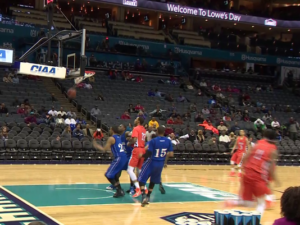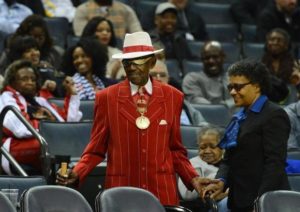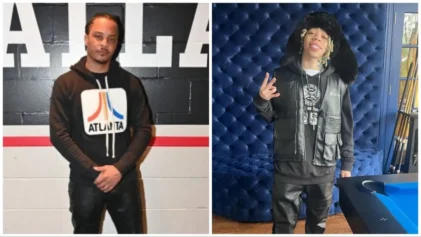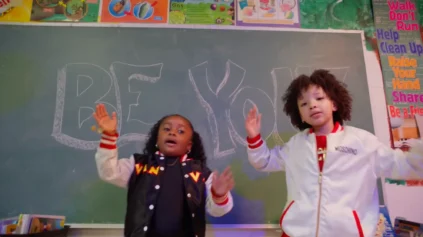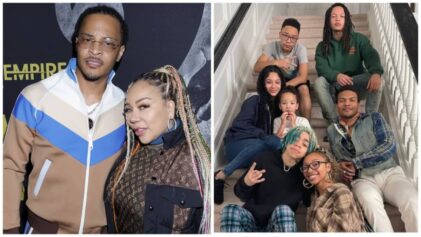The C.I.A.A. (known as the “C-I-Double A”) ranks as the most prestigious and well-attended basketball tournament for Black colleges, and has been since its inception in 1945-46. But in the last decade, it has little by little floated away from its legacy of supporting member schools and social wonderment into party central. And that’s not cool.
It might sound extreme, but the future of this beloved conference tournament that has produced countless leaders in various industries is troubled. The future of many potential professional athletes could be in doubt if the need for corporate infusion and twerking does not find a middle ground.
Tens of thousands of people flocked into Charlotte last weekend for the CIAA Tournament—and perhaps 90 percent of them did not attend a single basketball game.
But close to 100 percent of the “fans” attended day parties, night parties and after-parties. This is not to say socializing should be minimized. Indeed, the CIAA might be the originator and the perfector of the day-party, those afternoon delights that are just as thumping as one would expect at a party held during traditional evening events.
It is a concept that has caught on nationwide and it can be liberating to enjoy.
But at what price? Meaning, people literally travel for hours to Charlotte to party, which means the essence of the tournament—founded to showcase Black college talent and serve as an opportunity for students and alumni of the participating schools to fellowship—has morphed into a corporate money grab.
Major sponsors and promoters, seeking to take advantage of that trillion dollars in African-American spending power, create events and concerts that add a nice element to the weekend…if it did not take away from the genuine purpose of the occasion.
Many alums who would make the annual trip to Norfolk or Richmond or Raleigh or Winston Salem—other past CIAA Tournament sites—have been priced out by greedy hotels and scared away by young party-goers whose primary focus is to “wild out.”
There was a gentler, warmer time for the CIAA Tournament, and it was not that long ago. During that period, the games were packed and the parties were fun, not potentially dangerous. Mr. CIAA, a gentleman who would parade around the arena in colorful suits, was a form of entertainment. Fashion was a theme, often with women sporting fur coats and men dapper in suits and ties. Not anymore, although Mr. CIAA refuses to be run out.
The box scores from the games do not even post attendance numbers, as box scores are supposed to. Instead, the box score from the men’s championship game read: “Attendance: 0.”
Could that be a way of not disclosing to sponsors how few people actually go to the games?
It also is not cool that CIAA officials had to use the start of the week to distance the tournament from a shooting at a concert featuring rappers T.I. and Young Jeezy and a stabbing at another “CIAA party.”
Derek Ross, a spokesman for the CIAA tournament, said the events where the violence occurred were “unaffiliated with the CIAA. It’s unfortunate, but it’s not a thing we have control over.”
He said tournament leaders try to encourage attendees to go to events sanctioned by the CIAA and have tried to dissuade promoters–sometimes with letters from attorneys–from using the CIAA name on advertisements.
“All of our events–and we tried to communicate with our friends through email blasts and social media–are either positioned at the convention center or other official city locations,” Ross said.
“The people coming for the tournament, for the fellowship, for old friends from school, those things that are going on at Time Warner Arena were fine. There are other entities outside of the CIAA itself that host parties. Those entities, they need to step up their security mechanism for security.”
There is no easy solution to this quagmire. Charlotte signed on to host the tournament for another six years. The CIAA brings in $30 million to the city, including 40,000 hotel rooms, the city’s tourism authority said. That many of those rooms cost upwards of $300 a night in Charlotte speaks to the exorbitant price-gouging that keeps away the retiree on fixed income who used to make the CIAA Tournament an annual experience.
This is a conference of enormous history. The gracious Earl Lloyd, who died last week, was the first Black player to play in an NBA game. He played in the CIAA Tournament for West Virginia State. NBA champion Bobby Dandridge played at Norfolk State in the CIAA. Charles Oakley and Ben Wallace, both from Virginia Union, were at the tournament last week. Hall of Famer Earl “The Pearl” Monroe played at Winston Salem; Detroit Piston “Bad Boy” champion Rick Mahorn played at Hampton in the CIAA; Curly Neal of the Harlem Globetrotters went to Johnson C. Smith; Al Attles from North Carolina A&T coached the Golden State Warriors to the 1975 NBA championship. The list of remarkable, accomplished CIAA products is extensive.
When Norfolk State, Hampton and other schools bolted for the MEAC, the conference was hurt by the talent it lost, but not in its tradition. The CIAA is bigger than any school.
It is a legacy that is beyond reproach in African-American college athletics. It was founded in 1912 as the Colored Intercollegiate Athletic Conference. “Colored” was replaced with “Central,” a sign of progress. The focus has to be on preserving this history, and not making it the place to come to party day and night.
By the way, for those who were “at” the CIAA Tournament but not really at the tournament, Livingstone College won the men’s side of the Tournament for the second straight year. Virginia State won the women’s title.
